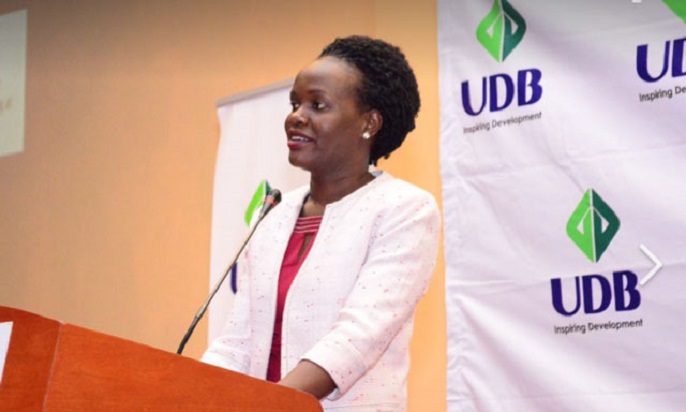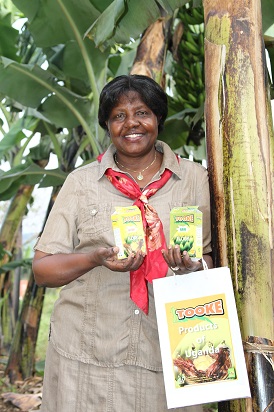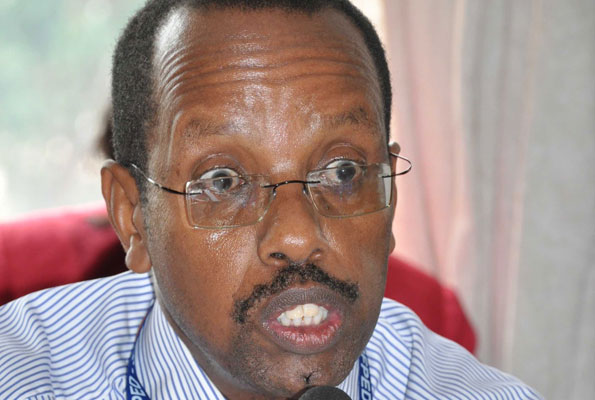Patricia Ojangole, the Managing Director of UDB.
Uganda Development Bank Ltd (UDB), the country’s national Development Finance Institution, yesterday released its Quarter Three (Q3) of 2022 results highlighting solid growth as the Bank continues to facilitate economic recovery through tailored interventions that suit the country’s development needs.
Through Q3, which covered the months of July, August, and September, UDB’s investment portfolio (gross loans) improved by 15% to close at Sh1.18trillion. Compared to the previous year, the annual growth registered was in the highs of 57 per cent.
During the quarter, the Bank approved funding amounting UGX333 billion and disbursed UGX237 billion.
“The funding was allocated to 72 projects across the country and operating within UDB’s priority sectors. In line with its strategy, the bulk (80%) of these approvals were towards projects engaged in primary agriculture (UGX83 billion); Agro-processing (UGX48 billion) and manufacturing (UGX180billion),” Ms Patricia Ojangole, the Managing Director of UDB said during the release of the results.
“The investments approved in Q3 improved the Bank’s 2022 approvals (since January 2022), to UGX797 billion, registering a 66% increase versus the UGX479 billion approved in the same period last year. This funding will support 201 projects across the country.”
The Bank continues to avail the much-needed liquidity of funds to boost the capacity and resilience of private enterprises. In Q3, UGX237 billion was released to various businesses, of which UGX167 billion (70%) was allocated to the Bank’s three priority sectors – with primary agriculture receiving UGX8.3 billion, Agro-processing UGX 64 billion, and manufacturing UGX95 billion, while other sectors/services (including infrastructure, tourism, and human capital development) accounted for 30% of the disbursements (UGX 70 billion in value).
The total disbursements for January to September amounted to UGX556 billion, more than doubling the UGX273 billion deployed during the same period in 2021.
| Parameter
|
Q1 2022 | Q2 2022 | Q3 2022 | Total YTD 2022
(Jan – Sept) |
| Approvals | 165 billion | 298 billion | 333 billion | 797 billion |
| Disbursements | 118.5 billion | 200.4 billion | 237.4 billion | 556 billion |
| Gross Loan Book | 908 billion | 1,026 billion | 1,180 billion | 1,180 billion |
SME Specialized intervention
Under its specialized intervention fund (dubbed the “UDB Special Programs”) that directly targets support to the Small and Medium Enterprises (SMEs), Youth, and Women-owned enterprises, the Bank approved funding amounting to UGX7.1 billion during Q3, bringing the total approvals in 2022 to UGX20.2 billion, to support 91 enterprises.
“The Bank will continue to focus on these segments to holistically address the issues that systemically challenge their access to credit, including but not limited to building enterprise capacity,” Ms Ojangole adds.
Social Economic Impact
The projects approved for funding are projected to generate various development outcomes, including 33,060 jobs. Upon full implementation, these projects are also expected to generate additional output value of UGX8.9 trillion, from which UGX365 billion in taxes will be paid to the Government.
| Sectors | Number of projects | Jobs Created / Maintained | Output value (UGX Bn) | Taxes
(UGX Bn) |
Forex
(UGX Bn) |
| Primary Agriculture | 77 | 7,558 | 558.92 | 48.03 | 2.53 |
| Agro-processing | 46 | 6,105 | 2,278.72 | 184.26 | 737.95 |
| Manufacturing | 25 | 16,087 | 2,688.76 | 116.25 | 790.93 |
| Tourism | 28 | 837 | 40.32 | 4.04 | 322.24 |
| Health | 5 | 176 | 28.50 | 2.28 | 0.79 |
| Education/BTVET | 4 | 82 | 1.15 | 0.11 | 0.0 |
| Infrastructure | 15 | 1,724 | 3,023.38 | 6.17 | 5.00 |
| Others | 1 | 491 | 288.00 | 4.05 | 0.0 |
| Total | 201 | 33,060 | 8,907.74 | 365.19 | 1,859.44 |
Non-Financial Interventions
Under its Business Accelerator for Successful Entrepreneurship (BASE) intervention, the Bank in Q3 implemented an Enterprise Development Program across the various regions of the country.
Conducted in partnership with government agencies including the Uganda Revenue Authority (URA), National Social Security Fund (NSSF), Uganda Registration Services Bureau (URSB), and Uganda National Bureau of Standards (UNBS), the training sessions aimed to support nascent SMEs on their journey to professionalize their operations, their formalization and building their capacity to be credit ready. The regional sessions targeting 1,130 SMEs, were conducted in Kampala, Mbarara, Fort Portal, Lira, Gulu, Arua, Masaka and Mbale districts.
Financial Performance
At the end of the quarter, the Bank’s total assets amounted to UGX1.44 trillion, growing by 19% from UGX1.21 trillion at the start of the year. The growth in the assets and loan book is on account of sustained growth in funding over the recent past both from Government capitalization and draw down of lines of credit from bilateral and multilateral funders.
“The Bank remains a sustainable institution, generating adequate resources to sustain its operations and meet its financial obligations. During the quarter, the Bank received UGX26.65 billion from the Y2022/23 Government of Uganda budgetary allocation, increasing the capital receipts in 2022 to UGX86.1 billion,” Ms Ojangole said of the growing funding.
According to the Bank, to match the ever-growing demand for long-term (patient) and affordable capital, a key ingredient for sustained economic growth, the Bank is deploying various mechanisms to diversify its funding base, and to complement the capital allocations from the Government of Uganda.
The Bank remains committed to making a meaningful contribution to improving the quality of life of Ugandans, Ojamgole says.





